Westwood Hills Nature Center: Certified Net Zero Energy in a Cold Climate
The Westwood Hills Nature Center in St. Louis Park, Minnesota achieved Zero Energy Certification from the International Living Future Institute
Published 10-25-22
Submitted by HGA
October 24, 2022 /CSRwire/ - The HGA-designed Westwood Hills Nature Center is part of a 160-acre nature park featuring prairie, forest, and marsh areas in the heart of the City of St. Louis Park, Minnesota. As a demonstration in support of their Green Building Policy and Climate Action Plan, the City of St. Louis Park challenged HGA to create a zero energy building to serve as a teaching tool, demonstrating passive and active strategies for energy efficiency and stormwater management, in addition to showcasing interpretive exhibits highlighting Minnesota’s landscape and wildlife habitat. One hundred percent of the center’s annual energy needs are supplied by on-site renewable energy.
The recent Zero Energy Certification reflects the City of St. Louis Park’s long legacy of environmental stewardship and highlights HGA’s commitment to meeting clients’ goals through a holistic approach, integrating sustainability, resilience, research, and equity into the design process.
According to IFLI, “Zero energy is recognized worldwide as one of the highest aspirations in energy performance in the built environment. Zero Energy Certification allows projects to demonstrate that the building is truly operating as claimed, harnessing energy from the sun, wind, or earth to produce net annual energy demand. Through a third-party audit of actual performance data, Zero Energy certified projects are proven to be highly efficient buildings that rely only on clean energy, without onsite combustion of fossil fuels.”

The Center
Replacing a small, remote and nondescript building from the 1980s, the 13,000-square-foot environmental learning center is one of the first net zero energy buildings—certified by the International Living Future Institute—in the state, demonstrating net zero energy design is possible even in cold Minnesota winters.
The center comprises a series of multipurpose rooms used for environmental learning classrooms and public events, outdoor classroom space, an expanded public exhibit, staff offices and additional flexible learning and support spaces. Connecting outside, the center houses raptor mews, and expanded parking welcomes more visitors.

The exposed, all-wood structure of Alaskan Yellow Cedar glue-laminated columns and beams and laminated wood deck embody at a larger scale the microscopic structure of bundled parallel cellulose fibers of wood. The exterior skin of the building is expressed in bark-like layers of siding textures and colors. Façades of fiber cement panels and wood window assemblies subdivide and branch to abstractly represent the geometry of trunks, branches, and leaf veins of trees and plants.
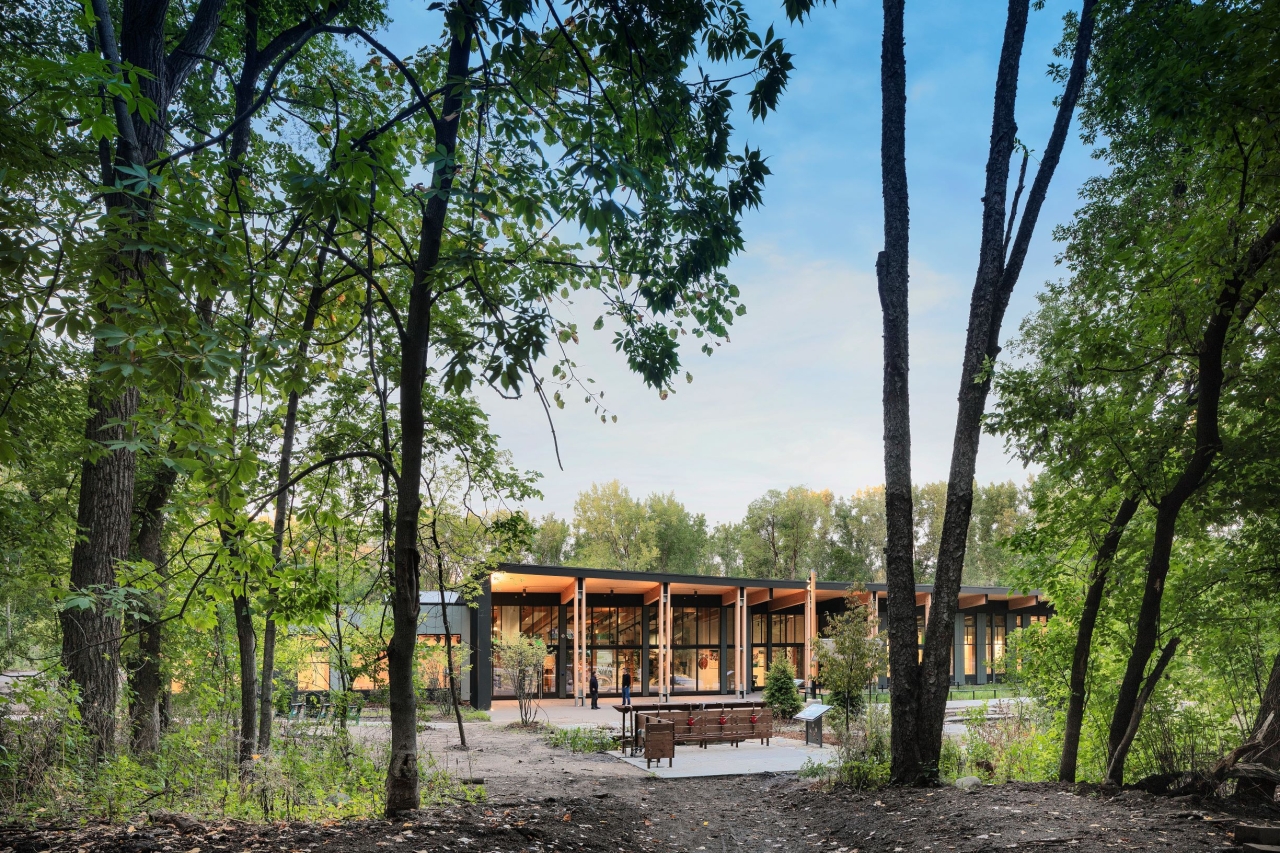
Energy Goals
Collaboration with the city and all partners involved was key to ensuring energy goals were met. An energy budget was established for the project and covered everything from lighting design to exhibit design. The team was able to fine-tune various parts of the project by using an energy model that was updated at each phase and key milestone, ensuring the energy goals were achieved as economically as possible.
HGA also used several analytical design tools, including solar radiation analysis, wind direction, and daylighting/glare analysis, to establish strategies and test efficiency through the design process.

Integrated Sustainable Thinking
The building is oriented east to west with a southern exposure to take advantage of solar angles and prevailing winds. Its roof form opens the building up to views and maximizes daylight to reduce energy use. From a systems standpoint, the biggest contributor to energy reduction is the geothermal wellfield, which uses the earth as a heat source for the radiant and forced air systems. In addition, the lighting controls and a building automation system helps the city optimize the various building systems.
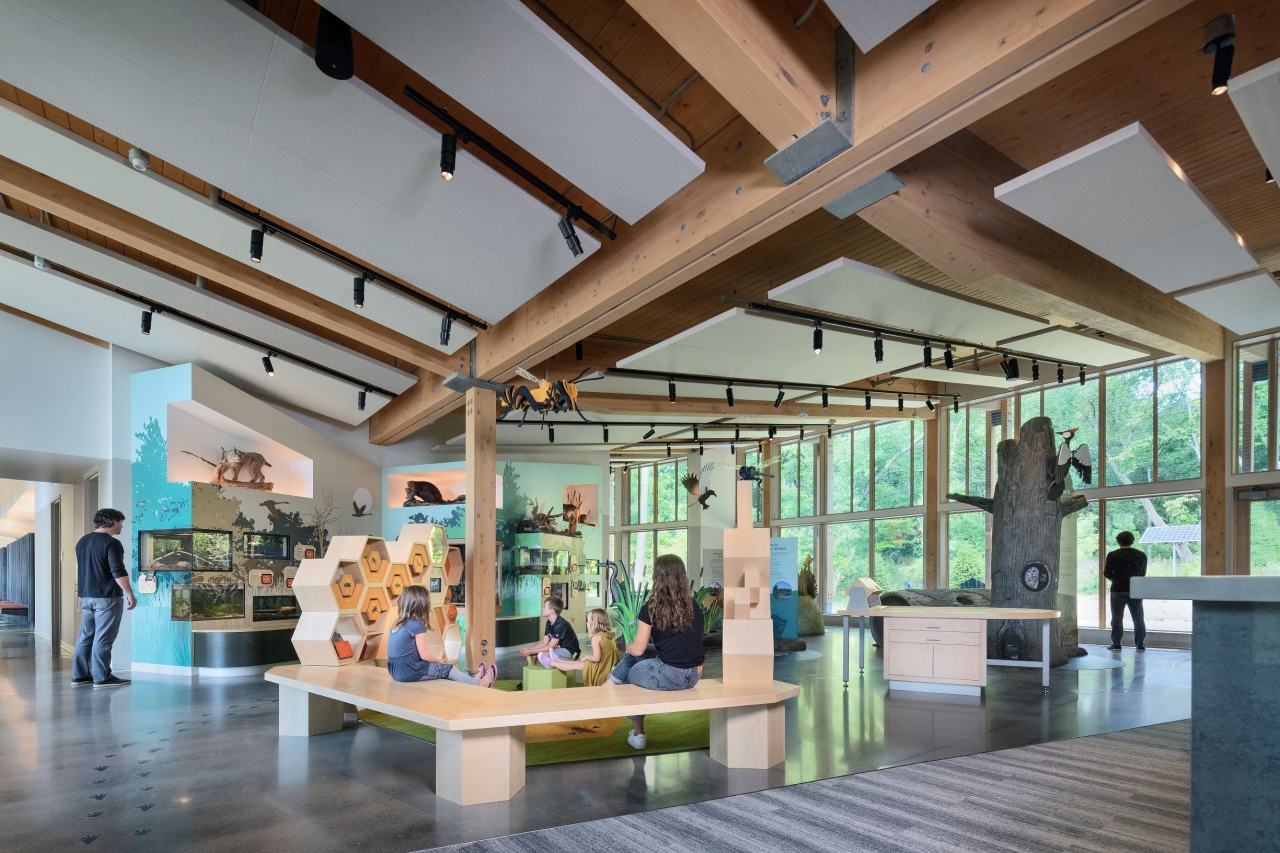
Passive and Active Strategies for Energy Efficiency
The building and site design provided an interpretive example of good stormwater management practices. Sited near the marshy wetland of Westwood Lake, the building captures roof rainwater to minimize impact on the watershed. The captured rainwater feeds an underground storage pipe and is then pumped, via both solar and hand powered pumps, through a series of infiltration basins to form an interpretive feature that demonstrates the area hydrology for visitors.
Some of the passive energy strategies used on this project include summer sun shading, winter sun solar collection, thermal mass walls that stretch most of the building’s length and natural ventilation. Active strategies applied include solar photovoltaic panels, a geothermal wellfield and in-floor radiant heating. The energy use of the building is continually on display through an interactive dashboard as part of the nature center’s interpretive mission. Thirteen signs are also placed throughout the interpretive center and grounds to highlight the environmentally conscious strategies used, helping educate the public on sustainable design.
The experience of moving through the landscape of the nature center among plants and trees forms a conceptual framework for the building design. Inside and out, every component becomes an expressive learning opportunity, inspiring residents to connect to nature.
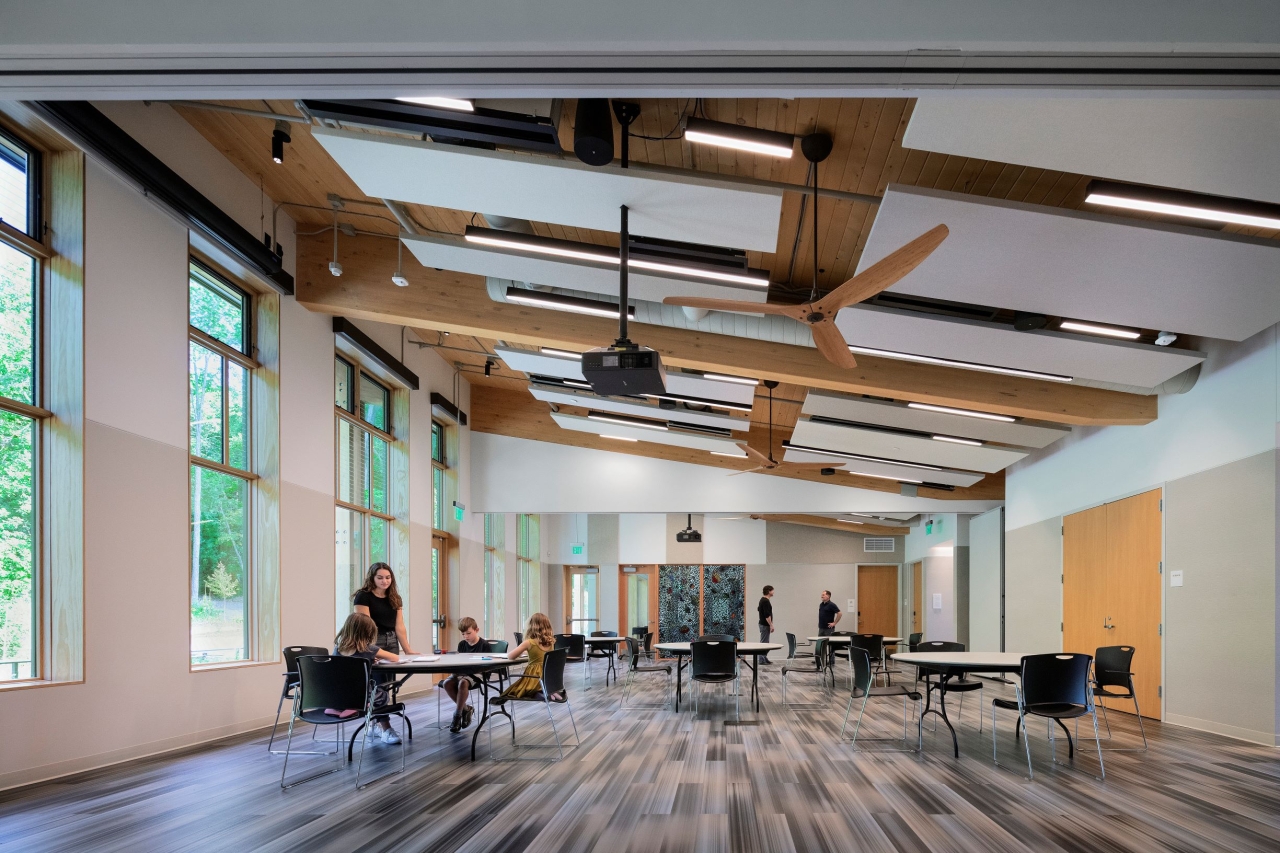
Resilience and Future Climate Projections
Initially, HGA worked with the city and local government officials to explore how future climate conditions could impact building system performance and Zero Energy operations.
The use of climate projection data played a key role in verifying the performance of building systems well into the future. Early on, HGA and owner representatives held a resilience workshop to assess potential risks to the project over its life span including everything from public safety scenarios to impacts of climate change. From an energy standpoint, the team used multiple projected data sets from WeatherShift in the energy model to compare system performance under different climate scenarios. Minnesota’s cold climate is projected to warm, so heating loads were shown to decrease and cooling loads to increase, resulting in an overall predicted decrease in overall energy use in both the best case and worst-case future warming scenarios.
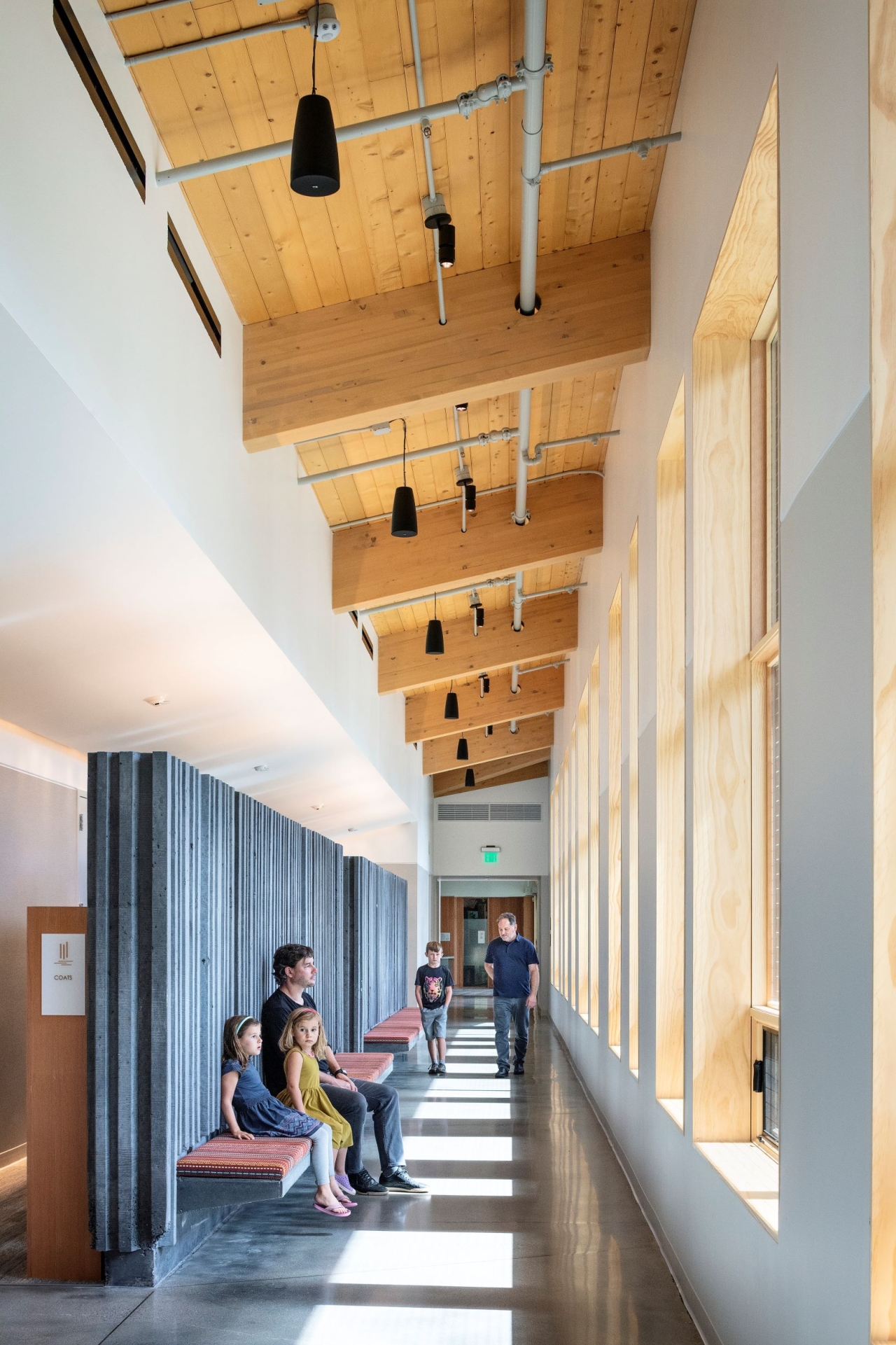
Ariane Laxo, HGA Director of Sustainability, said, “The client wanted this building to be a teaching tool, demonstrating sustainable design throughout the project as part of their conservation programming. The design team was collaborative across disciplines, and sustainability strategies literally shaped the building, from passive design strategies contributing to the net zero energy goal to natural, biophilic materials selected to foster a connection to nature and lower the project’s embodied carbon. The resulting space is beautiful, inspiring, and blends seamlessly into the surrounding natural environment.”

Net Zero Energy Engineering
Great strides have been made in delivering energy-efficient and net zero energy buildings throughout the industry. However, aggressive energy-efficient building design still poses challenges in colder climates like Minnesota. The design team and the owner felt it was important to deliver a proven and cost-effective way to achieve Net Zero Energy building design. Through the integrated development of the building form and passive energy reduction strategies, a high-performance envelope, advanced lighting, and effective use of proven heat pump technologies, the Westwood Hills Nature Center was able to achieve cost-effective Zero Energy Certification, eliminating the use of fossil fuels in its operation. Since its opening, the building design and energy-efficient systems have already served as an important educational piece to the region and the public.
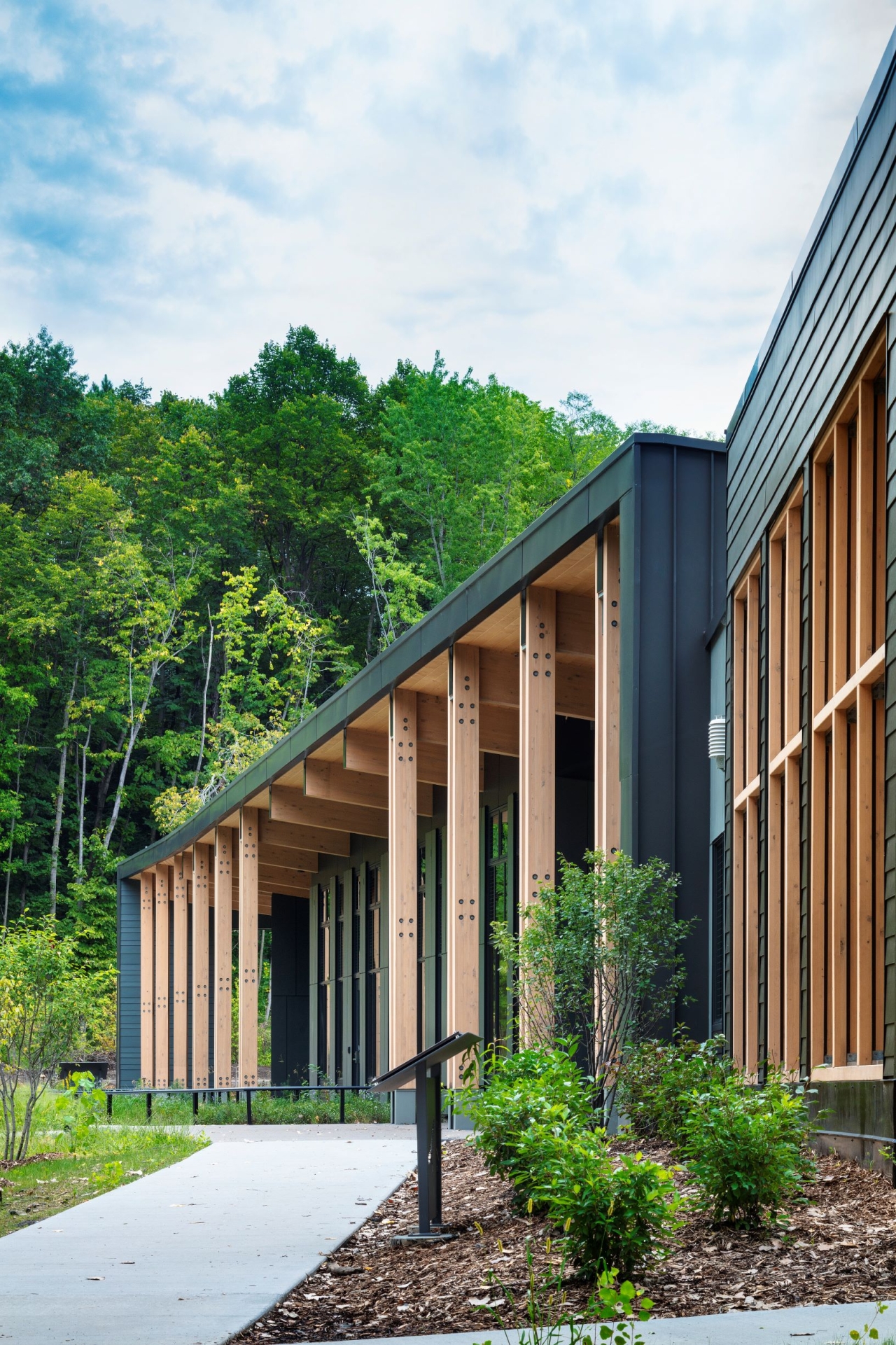
Notable facts about Westwood Hills Nature Center:
- The Nature Center is an all-electric and fossil-fuel free building.
- The Center is Zero Energy Certified.
- Operational data shows the building as energy net positive This means that on an annual basis, it produces more energy than it consumes.
- Westwood Hills Nature Center and the Wolf Ridge Environmental Center in Finland, Minnesota, both designed by integrated HGA teams, are the two largest Zero Energy Certified buildings in Minnesota, of only three total in the state.
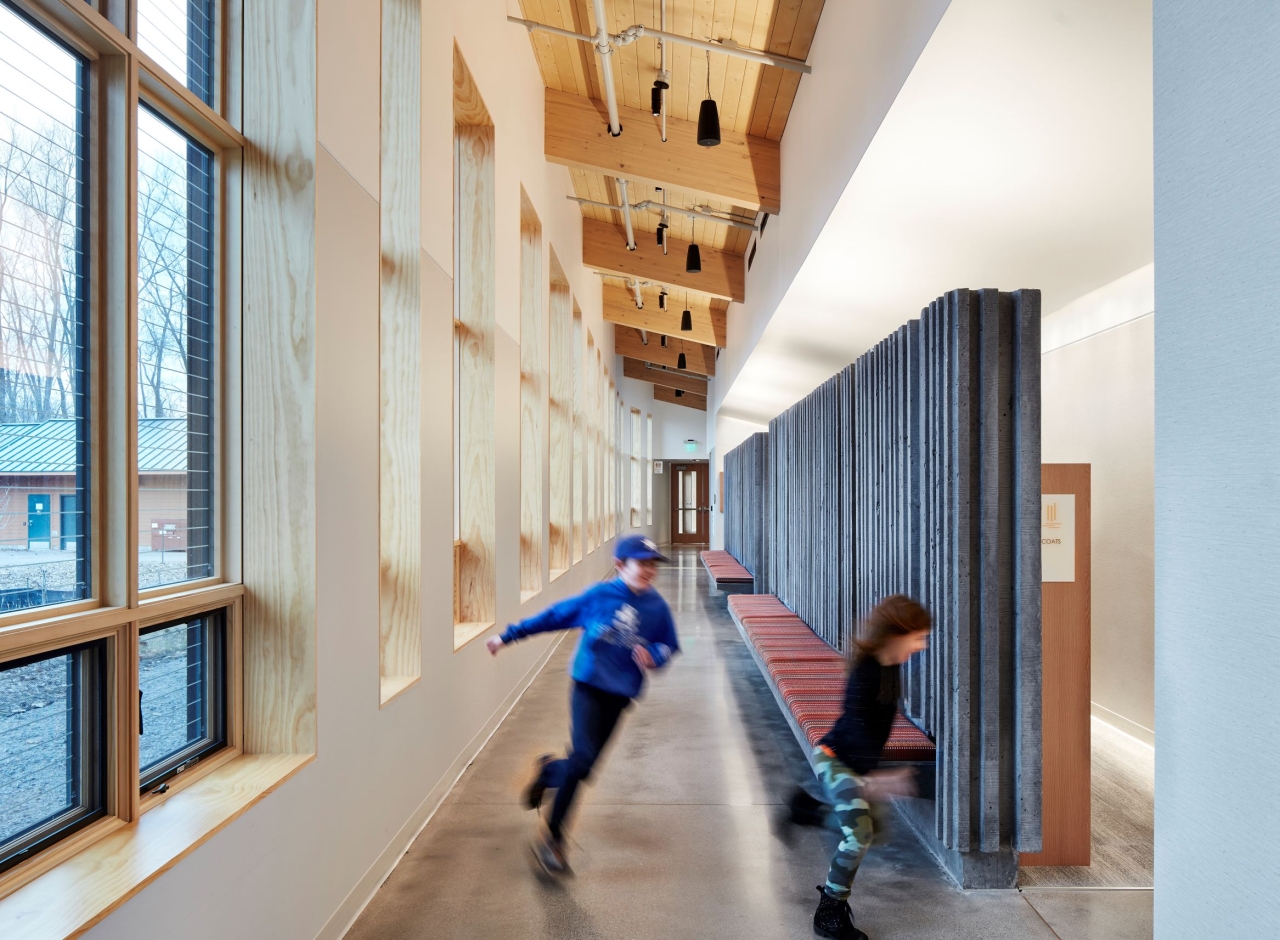
Project partners include RJM Construction as the general contractor, Integral on energy modeling and zero energy strategy, and Salter on acoustics.
About HGA
HGA is a national interdisciplinary design firm committed to making a positive, lasting impact for our clients and communities through research-based, holistic solutions. We believe that great design requires a sense of curiosity—forming deep insight into our clients, their contexts, and the human condition. We are a collective of over 1,000 architects, engineers, interior designers, planners, researchers, and strategists. Our practice spans multiple markets, including corporate, cultural, education, local and federal government, healthcare, and science and technology.

HGA
HGA
HGA is a national interdisciplinary design firm committed to making a positive, lasting impact for our clients and communities through research-based, holistic solutions. We believe that great design requires a sense of curiosity—forming deep insight into our clients, their contexts, and the human condition. We are a collective of over 1,000 architects, engineers, interior designers, planners, researchers, and strategists. Our practice spans multiple markets, including corporate, cultural, education, local and federal government, healthcare, and science and technology.
Visit HGA.com or follow on LinkedIn, Instagram, Facebook, and Twitter.
More from HGA

